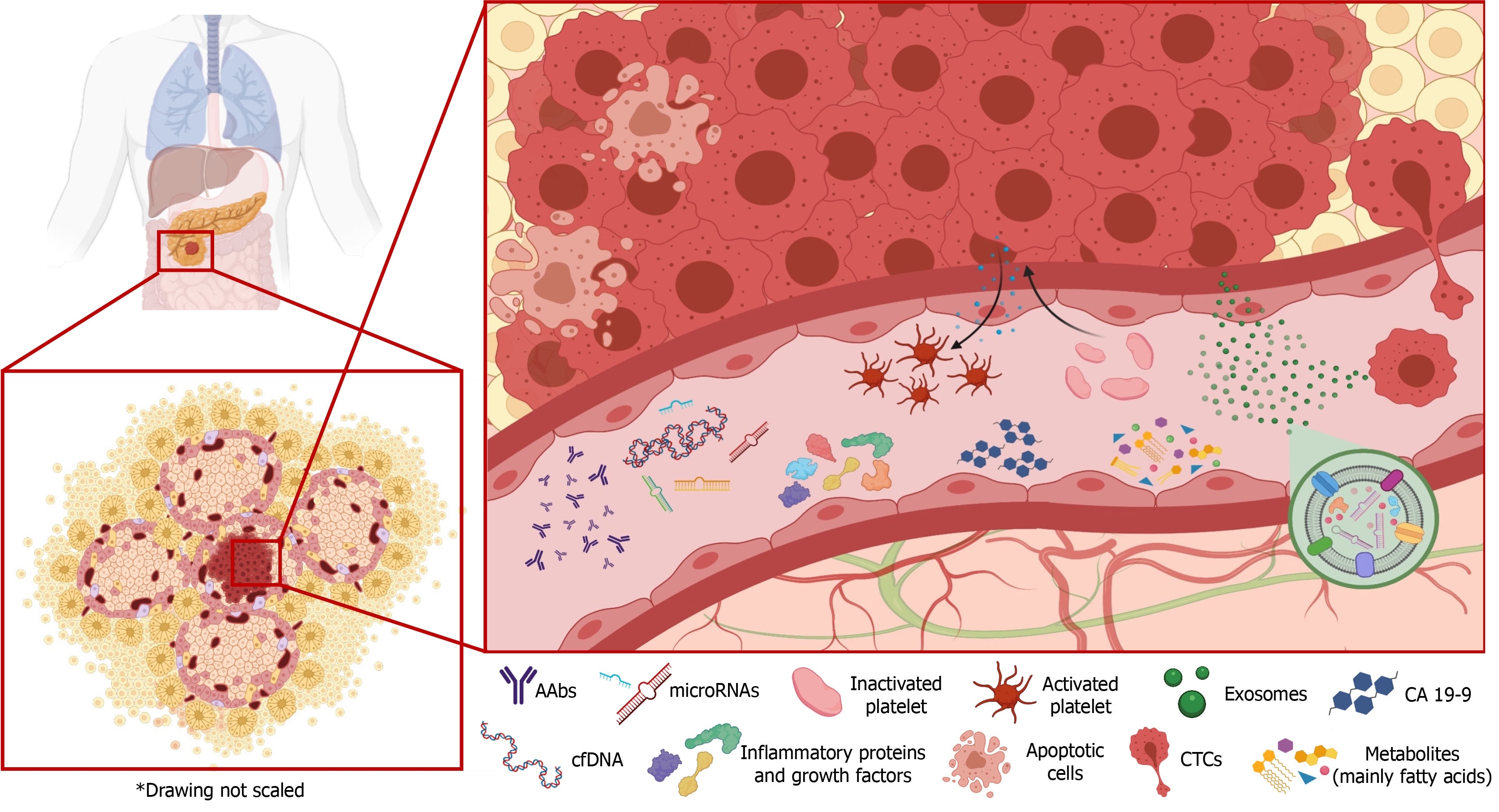Copyright
©The Author(s) 2021.
World J Gastrointest Oncol. Oct 15, 2021; 13(10): 1263-1287
Published online Oct 15, 2021. doi: 10.4251/wjgo.v13.i10.1263
Published online Oct 15, 2021. doi: 10.4251/wjgo.v13.i10.1263
Figure 1 Analytes and biomarkers encompassed in liquid biopsy.
Different types of tumor components can be detected in the peripheral blood of patients with pancreatic cancer. As mentioned in this review, these tumor analytes include circulating tumor cells, cell-free nucleic acids, proteins, metabolites, exosomes, and tumor-educated platelets. In general, these tumor-derived analytes are masked by a large amount of non-cancerous analytes shed by normal cells, which makes it difficult to isolate and detect the fraction that comes specifically from the tumor. In this scenario, the development of improved sensitive technologies has driven interest in this field allowing the use of liquid biopsies as a minimally invasive source of neoplastic material for molecular analysis. Each analyte has its own advantages and disadvantages and will provide different information. Depending on the type of study, the use of one or the other may be more interesting. In some cases, their mere isolation may already be informative or they may be used as a starting material for the detection of biomarkers. In general, the combination of several analytes improves the predictive capacity of each of them individually. Created with http://biorender.com. AAbs: Autoantibodies; cfDNA: cell-free DNA; CTCs: Circulating tumor cells. “Created with http://biorender.com”.
- Citation: Perales S, Torres C, Jimenez-Luna C, Prados J, Martinez-Galan J, Sanchez-Manas JM, Caba O. Liquid biopsy approach to pancreatic cancer. World J Gastrointest Oncol 2021; 13(10): 1263-1287
- URL: https://www.wjgnet.com/1948-5204/full/v13/i10/1263.htm
- DOI: https://dx.doi.org/10.4251/wjgo.v13.i10.1263









